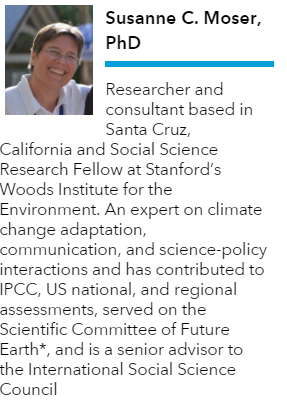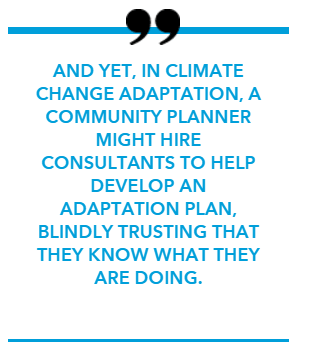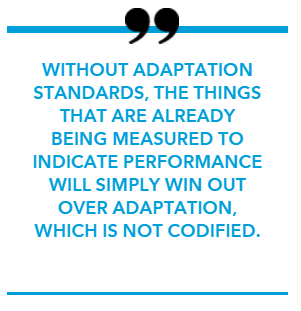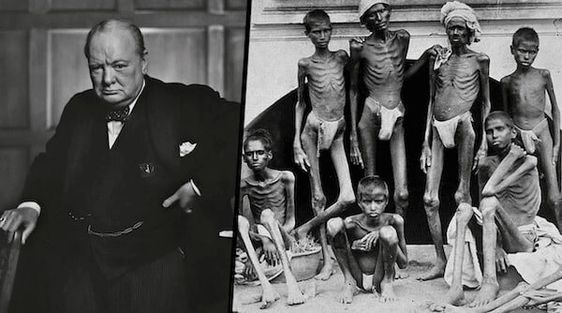 A few years ago, a colleague of mine who heads up the environmental planning and climate resilience efforts of a mid-sized
A few years ago, a colleague of mine who heads up the environmental planning and climate resilience efforts of a mid-sized
African city confessed she just threw out every single climate change adaptation planning guide she had collected over the years. None of these “best practice” guides (mostly from Europe and North America) actually helped her do her work south of the equator, so she couldn’t see holding on to them. No thanks to procedural adaptation standards!
Climate change adaptation standards – No thanks!
Another colleague, currently assisting local communities in the San Francisco Bay Area with their efforts to prepare for sea-level rise, sent me a well-considered email arguing against standards for climate change adaptation, suggesting essentially that the field is too young, our practices not tried and true, too nascent to standardize them. If anything, he argued, we need more freedom for experimentation, not confinement in the straitjacket of uniformity, to figure out what worked. No thanks!
And while I defended the need for adaptation standards in that exchange, I myself have long been known to argue that there is no single or simple answer in determining what “adaptation success” might mean.1 There are far too many value judgments, trade-offs, cross-sectoral and cross-scalar complexities and context-sensitive questions involved to give any one answer, and all stakeholders (including the private sector) need to be at the table to answer them. But does that then not contradict the very idea of standards, which by their very nature assume that there is a particular way of going about climate change adaptation that is better than their lesser alternatives? So, if we cannot answer what “success” is, how can we possibly set standards for adaptation to climate change?
Climate change adaptation standards are necessary… Because the alternative is unacceptable
Admittedly, these are pretty sharp arguments against standards. If only it were that easy to dismiss them! For starters, there are the very practical questions I – and many others – get asked nowadays by planners, decision-makers, policy-makers, leaders of professional societies, philanthropies and non-governmental organizations: What adaptation practices work? Which are better than others? Are we making any progress toward resilience? How should we build infrastructure now? What is a good adaptation decision? How do we design an adequate adaptation process? Who should sit at the table? How should we train adaptation professionals? What is ethical practice? I wish there was something I could point to that would help me answer these questions with more than my personal judgment from 20-some years of experience. And now that there is an explicit adaptation goal in the Paris Agreement, finding reliable answers to these questions has become an imperative.3
Beyond this first layer of practical questions lie deeper issues though. Consider this: anyone who goes for something as simple and personal as a chiropractic treatment can be assured the practitioner has been professionally trained, carries a license, and regularly attends professional development sessions to maintain that license. If one would feel the treatment was inadequate or harmful, there is a process in place to hear the grievance and get compensated if actual harm is found. In climate change adaptation – an arguably far more complex and consequential endeavor – there is almost no professional training (a few courses offered around the world is all!); no assurance that such training is comprehensive or sophisticated; no certification; nor a process for mediating contrasting opinions about adequate or negligent professional behavior.
But you might say, adaptation is carried out by professionals, say engineers, conservation specialists, health care provider, or planners, and each of these professions has its standards. Is that not enough? Surely, no business would think of hiring an engineer who had not been adequately trained and certified; no municipality would approve the budget for upgrading its infrastructure if that bridge, road or sewage treatment plant were not built to specifications that ensured performance for a specified number of years. And yet, in climate change adaptation, a community planner might hire consultants to help develop an adaptation plan, blindly trusting that they know what they are doing.
A community may pay for an upgrade to its infrastructure by engineers, who they can trust to know how to build a bridge, but only hope to have relevant training in climate science, impacts and adaptation.
WITHOUT ADAPTATION STANDARDS, THE THINGS THAT ARE ALREADY BEING MEASURED TO INDICATE PERFORMANCE WILL SIMPLY WIN OUT OVER ADAPTATION, WHICH IS NOT CODIFIED.
 In fact, what should that local official look for among the qualifications? For example, besides subject-matter qualifications, how important are skills such as a solid understanding of climate science, the ability to effectively facilitate stakeholder engagement? How much awareness and appropriate navigation of the ethical environmental, intergenerational or social-justice issues involved in adaptation is needed? Should they know how to design decision processes in the face of deep uncertainty? How important is effective communication, systems thinking, interdisciplinarity, or the ability to manage complex, politicized processes? To me banking on the assumption that an engineer or a medical professional knows about adaptation is like asking an orthopedist (whom we know and trust because of how they helped us before) to evaluate a skin rash. Or – to make the point more forcefully – to assess a worsening heart murmur.
In fact, what should that local official look for among the qualifications? For example, besides subject-matter qualifications, how important are skills such as a solid understanding of climate science, the ability to effectively facilitate stakeholder engagement? How much awareness and appropriate navigation of the ethical environmental, intergenerational or social-justice issues involved in adaptation is needed? Should they know how to design decision processes in the face of deep uncertainty? How important is effective communication, systems thinking, interdisciplinarity, or the ability to manage complex, politicized processes? To me banking on the assumption that an engineer or a medical professional knows about adaptation is like asking an orthopedist (whom we know and trust because of how they helped us before) to evaluate a skin rash. Or – to make the point more forcefully – to assess a worsening heart murmur.
And then consider this: a manager of a business with global supply chains and trading partners sees the necessity for thinking about adaptation and hires someone to oversee the company’s adaptation efforts. Then some unprecedented climate extreme affects a crucial production site along the supply chain, and the business disruption costs millions in losses because no one had thought to also implement adaptation efforts at other sites, considered redundancies, or checked whether adaptation efforts taken elsewhere were “good enough.”4 And even if she did all these things, her concerns probably got drowned out in debates over production goals, quarterly returns and business imperatives. Without adaptation standards, the things that are already being measured to indicate performance will simply win out over adaptation, which is not codified.
Climate change adaptation standards for an emerging field?
Standards can be developed for many aspects of adaptation, as St. Clair and Aalbu discuss: design standards (structural specifications), performance standards (outcome specifications), and procedural standards (process specifications).2 But what if we just do not know (yet) what skills and qualifications an adaptation professional should have? What if it is unknowable what the best pathway forward is given climate change uncertainties, the difficulty of predicting impacts with any temporal and geographic specificity, and the limited reliability of solutions under changing conditions? What if it is not proven yet what designs, approaches and practices work? And what if we cannot agree on desirable outcomes?
All metaphors will be limited, but we do have exemplars that can provide insight, inspiration and encouragement for situations where a particular practice is not yet standardized. Take the procedural standards for experimental drug use. We allow it, and allow it only, under controlled circumstances when we have tried everything else and we have clear indication that the experimental drug is promising, even if we do not yet have enough evidence that it will work. We must follow proper procedure and carefully collect information about the consequences of such use. Following these procedural standards does not guarantee that the ill patient will walk away healthy. But it does ensure clear communication of risks and potential benefits, clarity on liability, a dependable and transparent process detailing the conditions and implementation of the experiment, a protocol for close monitoring of the consequences of using the drug, and because of all of these procedural standards – ultimately – some degree of protection for both the individual and for society.
Standards convey values
Any one metaphor or way of framing the adaptation challenge will bring forward different sets of concerns and issues to which we need to pay attention. That is why it is essential to bring a wide variety of voices to the standard-setting table so that different perspectives and situational contexts can be considered.
But consider what lies beneath the standards that guide risky, uncertain, experimental and unproven procedures! They reveal certain values that we wish to maintain, even if we cannot ensure success. In the above example, the protection of human dignity, respect for informed decision-making, an appropriate balance of rights and responsibility of all involved, an imperative of learning from the trial, and the importance of trust come through.
As we move toward setting standards for climate change adaptation, we may on the surface haggle over technicalities, but underneath find ourselves enmeshed in the profoundly important negotiation over the values they bespeak, the values that should guide humanity’s path forward in an uncertain climatic, natural and social environment. As to the values that might guide us, we can draw on widely accepted ones: The Universal Declaration of Human Rights might be a fruitful, if general, starting place.5 The Earth Charter 6 may serve as a more directly relevant complement to guide the development of climate change adaptation standards given its focus on values informing social and environmental sustainability in a continually changing context.
A place to start
For sheer efficiency and ease, it might be useful to start these difficult negotiations with the standards we already have in place. It seems only reasonable to begin the development of adaptation standards with an inventory of existing standards that determine what we do; what, where and how we build; how we act; and then examine each for their fitness for, and responsiveness to, changing conditions.7 In doing so, it is prudent not to assume a particular climate target but perpetual change.
The next step then is to assess which of these existing standards, if implemented, would help us become better prepared for changing average and extreme conditions? Which of them hinder us from instituting better practices? Can those existing standards be adjusted by adding an “uncertainty buffer”? Or can they be made “dynamic” (i.e., by moving from fixed numbers to standards that are relative to a baseline, which will require regular updating)? That way climate change could be mainstreamed into existing practices, and – while clearly affecting stakeholder interests – be easier to accept by those who will have to enact them.
Only after existing standards have been fully considered, should we ask bigger questions: What are we missing? What practice relevant to climate change adaptation are we overlooking? In what ways is adaptation unique or significantly different to demand novel approaches? How do we create space for innovation without undue violation of the deepest values we wish to maintain? What is flawed or biased in existing practice that new standards could help transform fundamentally?
The promise of climate change adaptation standards
In the end, standards are only as good as their application in practice. Policy-makers should carefully consider how to use (often private sector-driven) standards as complements to other “carrot and stick” policy mechanisms (e.g., funding instruments, regulation, zoning) and enact them using innovative collaborations (e.g., working with educators, professional societies, credit rating institutions, investors, businesses, and researchers) as DNV GL is known to engage in. In short, standards cannot alone guarantee successful adaptation governance, but they can play a powerful and integral role in it.
As standards are being developed and implemented, they will garner attention, become visible and eventually foster change. They constitute essential mechanisms for professionalizing the field of adaptation practice.8 But that is only one of their benefits.
Ultimately, well-conceived standards will change the landscape of vulnerability. They can directly apply to the physical and natural capital of communities and companies, but they can, and should, also affect every other dimension of adaptive capacity: its human, social, financial/economic, technical/scientific and institutional aspects. As standards become embedded in normal procedure and solidify and professionalize adaptation practice, eventually they move into the background and become, as St. Clair and Aalbu 2argue, invisible. What the widespread use of adequate standards will visibly reveal, however, is a society better adept at dealing with a constantly changing, uncertain, and surprising environment.
ENDNOTES
Susanne C. Moser, PhD
Researcher and consultant based in Santa Cruz, California and Social Science Research Fellow at Stanford’s Woods Institute for the Environment. An expert on climate change adaptation, communication, and science-policy interactions and has contributed to IPCC, US national, and regional assessments, served on the Scientific Committee of Future Earth*, and is a senior advisor to the International Social Science Council
- Moser, SC, and MT Boykoff (eds.) 2013. Successful Adaptation to Climate Change: Linking Science and Practice in a Rapidly Changing World, London: Routledge.
- St.Clair, AL, and K Aalbu. 2016. Business Action for Climate-Resilient Pathways: The Role of Standards. Group Technology and Research Position Paper 4-2016, Høvik, Norway: DNV GL.
- See Article 7 of the Paris Agreement, which establishes a global adaptation goal; see discussion also in: Magnan, A. K. and T. Ribera. 2016. Global adaptation after Paris. Science352: 1280-1282.
- Moser, SC, and JAF Hart. 2015. The long arm of climate change: Societal teleconnections and the future of climate change impacts studies. Climatic Change129 (1-2):13-26.
- UN (1948). The Universal Declaration of Human Rights.
- Earth Charter Initiative. 2000. The Earth Charter.
- One important, if incomplete, example is: Office of Management and Budget. 2016. Standards and Finance to Support Community Resilience. Washington, DC: The Executive Office of the President of the United States.
- The Bridgespan Group. 2009. The Strong Field Framework: A Guide and Toolkit for Funders and Nonprofits Committed to Large-Scale Impact. San Francisco, CA: The James Irvine Foundation.
* Future Earth is a major international research platform providing the knowledge and support to accelerate transformations to a sustainable world. But it is also a platform for international engagement to ensure that knowledge is generated in partnership with society and users of science.



15 Comments
Pingback: twittervideodownloader.io
Pingback: PLAYSTAR
Pingback: นำเข้าสินค้าจากจีน
Pingback: เช่าเรือสปีดโบ๊ท,เช่าสปีดโบ๊ท เจ้าพระยา,เรือเช่าเหมาลํา เจ้าพระยา
Pingback: http://phoenixwomenmag.xyz/blogs/viewstory/47778
Pingback: 웹툰 사이트
Pingback: ทดสอบสมรรถภาพ นักกีฬา
Pingback: http://monmouthshire.planning-register.co.uk/SetLanguage?lang=cy-GB&returnUrl=https://devs.ng/
Pingback: see here
Pingback: วิเคราะห์บอลวันนี้
Pingback: เครื่องสแกนบัตร
Pingback: ชั้นวางของเหล็ก
Pingback: go to this website
Pingback: Best Undress AI
Pingback: fiwfans